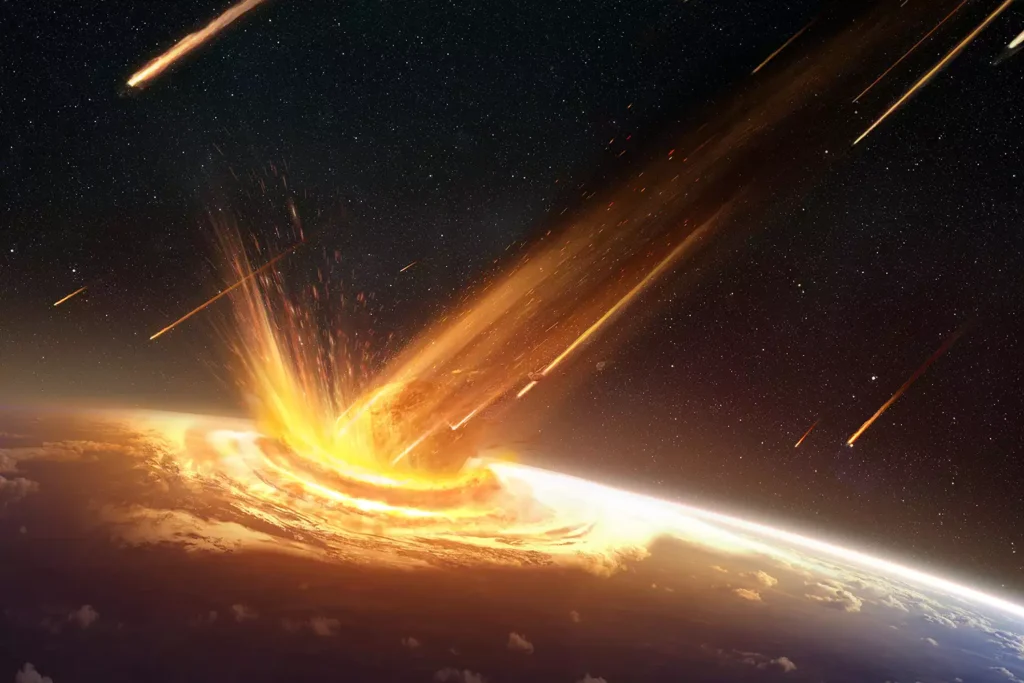
Illustration of an object colliding with Earth. Photo: Getty
For months, scientists have been closely tracking asteroid 2024 YR4, an enormous space rock that could cause catastrophic damage if it ever collided with Earth. While early calculations suggested a concerning risk, NASA has now significantly downgraded the chances of impact.
Initial Worries Over Asteroid’s Trajectory
Discovered in December 2024, asteroid 2024 YR4 was initially given a 1% chance of hitting Earth in 2032. By early February, that number had jumped to 2.3%, and by February 18, it reached an unsettling 3.1%—the highest ever recorded for an object of its size.
Read Also: Passengers Recall Terrifying Moments as Delta Flight Crash Lands in Toronto
NASA’s Latest Update Brings Reassurance
On February 20, NASA recalculated the asteroid’s trajectory and revised the risk down to just 0.28%. With better data, scientists now believe the chances of impact are minimal. As a result, the asteroid has been downgraded on the Torino Scale, which is used to measure the potential threat of space objects.
But What About the Moon?
While the risk to Earth has dropped, there’s now a 1% chance that asteroid 2024 YR4 could impact the Moon. Scientists are keeping a close eye on its movements and expect the probability to evolve as they gather more information.
The Race Against Time to Study the Asteroid

Researchers have until April 2028 to collect as much data as possible before the asteroid moves out of view due to its unique orbit. Measuring between 130 and 300 feet long, 2024 YR4 is comparable in size to the asteroid that exploded over Chelyabinsk, Russia, in 2013—an event that shattered windows, injured 1,500 people, and damaged thousands of buildings.
No Immediate Cause for Alarm
NASA reassures the public that there’s no reason to panic. Many near-Earth objects have previously appeared threatening but were later removed from risk lists after more precise calculations. Scientists will continue monitoring 2024 YR4 to ensure accurate predictions about its future path.






